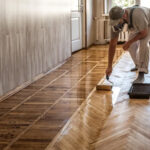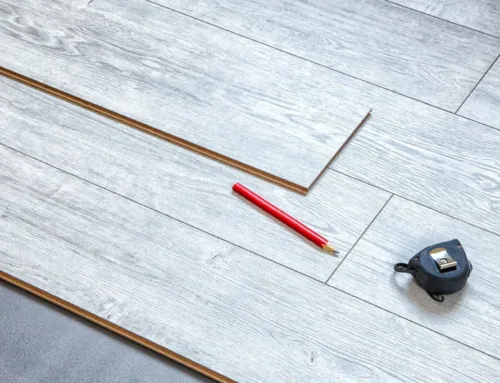The 3 Key Factors for a Successful Luxury Vinyl Flooring (LVP) Project
When considering luxury vinyl flooring (LVP) for your next flooring project, it’s crucial to focus on three main factors: stone content, click system, and subfloor condition. These elements can make or break the success of your LVP installation. To ensure a flawless outcome, keep these considerations in mind, and don’t hesitate to consult your local hardwood flooring store or distributor for expert advice.
1. Stone Content: Stability Matters
The stone content in LVP is a critical determinant of its durability and stability. For the best results, LVP should have a stone content of at least 65%. Here’s why this matters:
- Lower Stone Content: LVP with less than 65% stone content tends to be less stable and can shift or expand more over time, especially in fluctuating temperatures and humidity levels. This movement can result in gaps between planks and an overall less durable floor.
- Higher Stone Content: Flooring with a higher stone content is more rigid, allowing it to withstand rolling pressure without deforming. This makes it ideal for areas with heavy furniture or frequent foot traffic.
- Brand Considerations: Brands that use LVP with a lower stone content are more likely to experience product failures, so it’s essential to check this specification before making a purchase.
2. The Click System: Ensuring Long-Term Performance
The click system of your LVP is another essential aspect that impacts its long-term performance. A well-designed click system ensures that the planks lock together securely, providing a seamless and durable floor. Here’s what you need to know:
- Valinge 2G Click System: Known as the best click system in the world, the Valinge 2G offers unparalleled strength and stability. It locks tightly and requires angling to disengage, which means accidental unclicking is nearly impossible. This ensures the integrity of the flooring over time.
- Drop Lock Systems: While common, drop lock systems can be problematic. They are more likely to unclick over time, creating gaps and cracks in the floor. This can require frequent adjustments and even lead to broken planks.
- Durability Under Load: Quality click systems, like Valinge 2G, allow for higher rolling loads over the seams, making them ideal for spaces with heavy furniture or equipment.
3. Subfloor Condition: A Strong Foundation
The condition of your subfloor is one of the most crucial factors in achieving a long-lasting LVP installation. A flat and strong subfloor ensures that the flooring remains stable, preventing damage to the planks. Consider the following:
- Flatness Requirement: A subfloor should be within 3/16″ over a 10-foot span to provide a proper foundation for LVP. Deviations beyond this can cause stress on the planks, leading to cracking and breakage.
- SPC Durability: Stone Plastic Composite (SPC) LVP is known for its strength and durability, but only when supported by a flat subfloor. Think of high stone content LVP as similar to concrete—when laid over a flat surface, it stays intact, but any unevenness can cause cracking.
- Potential Issues: Even a small dip or bump in the subfloor can cause the planks to flex, which may lead to breaks at the edges or even in the middle of the planks over time.
Conclusion: Invest in Quality for Lasting Results
For a successful LVP flooring project, focusing on stone content, click system quality, and subfloor flatness is essential. High stone content ensures stability, a reliable click system prevents gaps and cracks, and a flat subfloor provides the support necessary to keep the floor intact. By prioritizing these three factors, you’ll be able to enjoy the beauty and durability of your LVP for years to come. If you have any questions or need guidance, reach out to your local hardwood flooring store or distributor—they’re always ready to help. You can always visit our stores in person for more information in Boise, Atlanta and Spokane. Make sure to ask about Cordalera Flooring.
Author Profile
- I have worked in hardwood flooring for the last 8 years. Use to run a company of residential crews as well as a company with gym flooring. If you need floor installation or refinishing help, I should have an answer or at least get you in the right direction.
Latest entries
 FlooringDecember 10, 2025Wood Floor Restoration in Atlanta: What Affects the Cost
FlooringDecember 10, 2025Wood Floor Restoration in Atlanta: What Affects the Cost FlooringDecember 8, 2025Top 6 Wholesale Hardwood Flooring Solutions for Your Home & Office – Boise, ID
FlooringDecember 8, 2025Top 6 Wholesale Hardwood Flooring Solutions for Your Home & Office – Boise, ID FlooringNovember 25, 2025What Engineered Hardwood Flooring Will Last Longest?
FlooringNovember 25, 2025What Engineered Hardwood Flooring Will Last Longest? FlooringNovember 22, 2025Best Wood Floor Cleaner Liquid for Hardwood Flooring
FlooringNovember 22, 2025Best Wood Floor Cleaner Liquid for Hardwood Flooring




